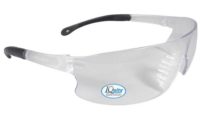Hearing loss, hand vibration, silica dust
Reducing the hazards of concrete drilling

Drilling into concrete can be dusty, loud, and physically exhausting. It also can expose workers to silica dust from sand and rock, which can damage the lungs if inhaled. Drilling also exposes workers to hand vibration and noise at levels well above recommended limits. Now, two NIOSH-funded studies through CPWR–The Center for Construction Research and Training and the University of California at Berkeley have identified ways to reduce these hazards.
One study used a new robotic system to measure productivity, silica dust, handle vibration, and noise, comparing these exposures in electric and pneumatic drills, which use pressurized air to operate. When testing drills without engineering controls such as a vacuum or water to reduce dust levels, investigators found similar productivity between the drills, but much higher vibration, dust, and noise levels with the pneumatic than the electric drill.
Specifically, vibration levels were more than 5 times greater with the pneumatic than the electric drill. In terms of silica dust, the pneumatic drill generated 444 times the Occupational Safety and Health Administration’s (OSHA) permissible exposure level, while the electric drill generated 11 times the OSHA level. The pneumatic drill’s noise level was also greater than that of the electric drill. To reduce these exposures to safely drill for more minutes per day, the authors recommend that workers consider using electric instead of pneumatic drills.
Using the same robotic system to evaluate drilling with bits worn to different degrees, the second study found that sharp, carbide-tipped bits produced less dust, noise, and hand vibration than dull bits when drilling into concrete. As expected, the use of a dull bit can increase the time to drill a hole by up to 60%. However, the new findings also show that a dull bit can increase noise by almost two decibels, generate about twice as much silica dust, and produce a small increase in handle vibration.
Exposures to these hazards are even greater for worn bits due to the increased time required to drill a hole. The team also found that the wear-related changes in the carbide-tip bit most closely associated with reduced productivity were reduced bit-tip width and rounding of the tip shoulders. Contractors and construction workers can check the condition of a bit by following these wear patterns. While a dust-controlling vacuum and hearing protection will still be needed for this work, the increase in productivity combined with the reduced exposure to dust, noise, and vibration makes a strong safety and business case for regularly replacing worn bits, according to the authors.
More information is available:
- Test Bench for Evaluating Concrete Drilling Methods
- UC Ergonomics Research & Graduate Training Program
- NIOSH Silica
- NIOSH Buy Quiet
- Work Safely with Silica
- NIOSH National Center for Construction Safety and Health Research and Translation
Looking for a reprint of this article?
From high-res PDFs to custom plaques, order your copy today!








